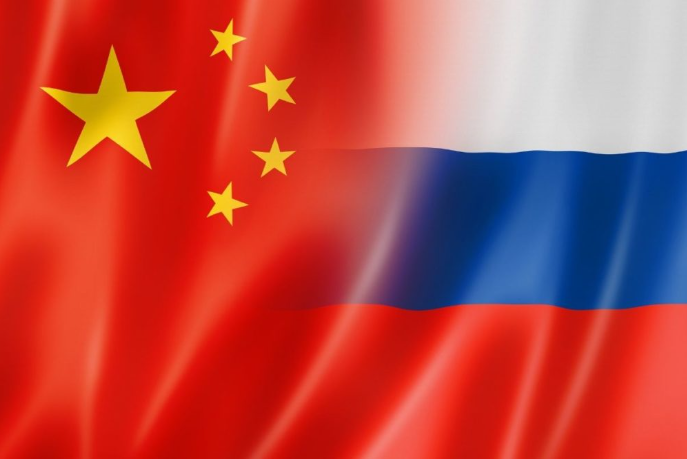MOSCOW, RUSSIA — Forging stronger political ties, Russia and China also are expanding agricultural trade, promising changes for the global grain market.
In October, Food Export Trade, a Russian grain exporting firm, signed a $26 billion contract to supply China with 70 million tonnes of grain, legumes and oilseeds over the next 12 years.
This is one of the biggest contracts in the history of the Russia-China trade relationship, said Karen Ovesepyan, head of the New Land-Based Grain Corridor Initiative, an infrastructure project designed to facilitate grain exports to China.
Following a March meeting with Chinese leader Xi Jinping, Russian President Vladimir Putin instructed the government to consider signing an intergovernmental agreement with China for the establishment of a Russia-China land-based grain corridor.
As part of the project, Russia hoped to expand grain production in Siberia, the Urals and the Far East, poorly populated parts of the country where agriculture is not developed as much as in the European regions. The additional quantities are planned to be almost entirely sold to China.
Russian grain exports to China already are booming, said Olga Zakharova, head of the sanitary department of the Russian veterinary regulator Rosselhoznadzor. Since 2014, the year when the first Western sanctions hit the Russian economy, the deliveries skyrocketed by a factor of 27 times.
During the first nine months of 2023, Russia exported 3.52 million tonnes of grain to China, compared with 2.2 million tonnes in the previous year.
“This is a great achievement,” Zakharova said, speaking about this year’s export growth.
In previous years, Russian agricultural exports to China were constrained by numerous sanitary restrictions. In the past two years, they have been massively lifted. In 2022, the Chinese side allowed the export of spring wheat and barley from Russia, while this year, peas and millet also received approval, Zakharova said. Russian veterinary officials are in negotiations to open the Chinese market for Russian corn and rice.
Grain exporters aren’t the only ones benefiting from trade liberalization. In September 2023, China lifted a 15-year ban on Russian pork imports. Talks between veterinary officials and negotiations at the top political level played a big role in getting the ban canceled, said Yuri Kovalev, chairman of the Russian Union of Pork Producers.
The importance of this step for Russian agriculture is hard to overestimate. Russian pork exports will rise by 500,000 tonnes per year with access to the Chinese market, said Sergey Novikov, general director of the Russian group of companies Agropromcomplektatsya. It could further boost Russian feed production and also bolsters the pig industry, where growth potential seemed to be nearly exhausted in recent years.
More sanitary restrictions are expected to be lifted further down the road. At the end of 2023 or early 2024, Rosselhoznadzor anticipates the Chinese authorities will withdraw restrictions on rapeseed imports for all Russian regions, Zakharova said. Work also is being done to open the Chinese market for Russian winter wheat and barley, she added.
In the previous decades, Russian grain exports to China were not only hampered by sanitary restrictions, but also relatively high logistics costs and a lack of transport and logistics infrastructure.
Russia shares a border with China only in the Far East, nearly 9,000 kilometers away from the key Russian agricultural regions.
In July 2023, Russia launched the Zabaikalsk Grain Terminal as part of the New Land-Based Grain Corridor Initiative, worth 9 billion roubles ($100 million). Thanks to the terminal, Russia will boost grain exports to China to 8 million tonnes per year in the next several years, Ovesepyan said. The future expansion of the Zabaikalsk Grain Terminal should increase this volume to 16 million tonnes per year, he added.
Russia currently doesn’t produce enough grain and oilseeds in its eastern region to secure such a planned growth in export to China, Russian newspaper Agroinvestor pointed out, citing local market players.
Currently, Russian export potential from Siberia, Urals, and the Far East is limited to 3 million to 3.5 million tonnes of grain per year, estimated Dmitry Rylko, general director of IKAR, a Moscow-based think tank. However, Russian exporters may find it difficult meeting the Chinese demand.
“Our main export commodity is wheat, and the Chinese need high-quality wheat with a 14.5% protein content,” Rylko said. “There is no such wheat in the Russian Far East at all, and in Siberia and Urals it is available in small quantities, which are usually quickly purchased by local millers.”
In theory, the signing of this deal could give a powerful impetus for the grain industry development in Siberia and Urals, said Alexander Korbut, former vice president of the Russian Grain Union. However, the “devil is in details,” he said, noting that certain things about the export deal must be clarified before any concrete forecasts can be made.
For example, China has import quotas on the wheat market. Supplies within the quotas are subject to a 1% import duty, outside the quote to a 65% duty.
“A question is: Are there obligations from the Chinese side that the volumes (under the contract) will be supplied within the quota?” Korbut said.
Also, where grain exports from remote parts of the country are involved, a logistics factor comes into play. To make the logistics costs reasonable, the Russian government will need to introduce subsidies for railway transportation of grain to export terminals, Korbut said.
It is fair to expect logistics issues on the Chinese side, too. Russia borders northwest China, the key grain producing region, from where colossal grain quantities are directed to the southern, most populated regions, housing main processing infrastructure, Korbut said.
In China, railways are overloaded, and Russian grain could put additional pressure on it. In theory, Russian grain could be exported to China through Kazakhstan and Mongolia. However, there is a need to switch trains from wide (1,520 mm) to narrow (1,435 mm) gauge railway tracks. Investments in the infrastructure in the transit countries are expected under the One Belt One Road Initiative, but the pass-through capacity of this route will be limited in the coming years.
On the other hand, Russia is currently building port infrastructure in the Far East to facilitate grain export to China, Rylko said.
In addition, Russian railway monopoly RZD is preparing to launch the third stage of modernization for the BAM and Trans-Siberian routes, the world’s longest rail lines spanning the Far East and Siberia with the European part of the country. Both railways will see their capacity increased substantially in a Russian effort to make them more efficient in absorbing redirected traffic.
In 2022, the BAM and Trans-Siberian routes were overloaded, as Russian businesses struggled to redirect some commodities, including coal, previously destined for the European markets to the Asian direction.
According to a report by business daily Kommersant, citing internal RZD documents, the infrastructure expansion project will cost roughly 2.2 trillion rubles ($23.6 billion). The company plans to boost the freight capacity of the arteries from the current 197 million tonnes to 255 million tonnes per year.
Export to China will help the troubled Russian grain industry and increase competition in the Chinese market, according to Russian analysts.
Russia now exports grain to 71 countries, with 10 countries having suspended imports from Russia due to political reasons or difficulties in settlements, Eduard Zernin, chairman of the Russian Union of Grain Exporters, said, adding that Russia also could export grain to China from its southern ports, including in the Panamax-class vessels.
In general, Russian market players believe an increase in grain exports to China is a win-win situation and that businesses on both sides eventually will benefit from trade liberalization, which essentially is secured by the historic rapprochement of the two countries.
In 2022, Russia-China trade jumped by nearly a third, reaching a record $190 billion, the Russian Customs Service estimated. China played a critical role in the Russian efforts to soften the sanctions’ blow on the economy, including agriculture. For instance, Russia now imports 80% of feed additives from China, while in the previous year the lion’s share of the deliveries came from the European Union.
Under a recently adopted trade development plan, this turnover is slated to reach $400 billion by 2030.
The Russian role in the Chinese grain market does not fully reflect Russia’s capabilities as one of the major exporters of grains and oilseeds, said Alexander Daniltsev, director of the Institute of Trade Policy at the National Research University Higher School of Economics.
For China, the agreement makes it possible to fix grain prices for 10 years, said Artem Shakhurin, an expert at IVA Partners.The signing of the contract also will provide a reliable sales channel for Russian grain farmers and logistics companies willing to invest in the industry expansion in eastern Russian regions, Shakhurin said.
By World Grain

